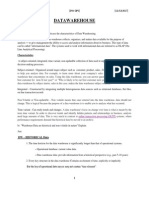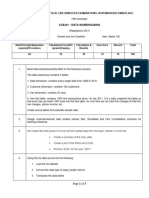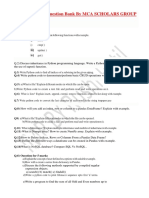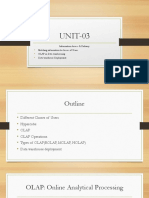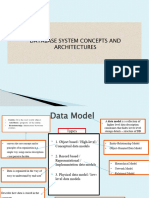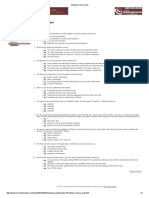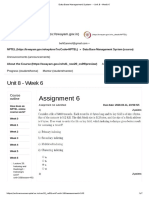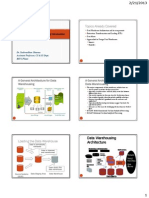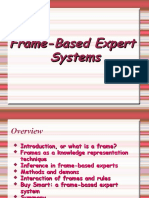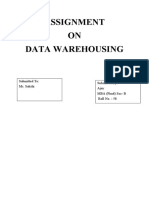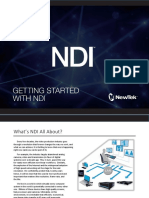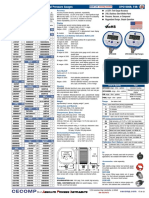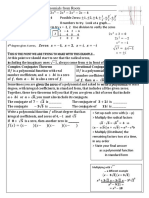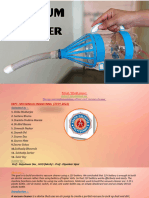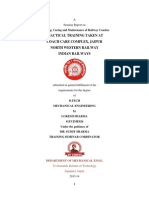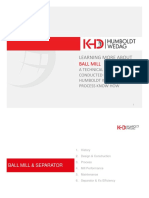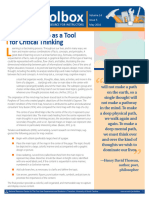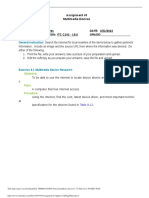100% found this document useful (2 votes)
2K views9 pagesData Warehousing Overview & Design
This document provides an overview of data warehousing and its key components. It discusses that [1] a data warehouse integrates data from multiple sources to support analytics and decision making, [2] it allows access to historical data to help analyze patterns, and [3] it provides a single point of access for querying and reporting. The document then describes the seven main components of a data warehouse architecture, including data sourcing tools, a metadata repository, query/analysis tools, and administration tools. It also discusses characteristics like being theme-focused and non-volatile.
Uploaded by
Rushil NagwanCopyright
© © All Rights Reserved
We take content rights seriously. If you suspect this is your content, claim it here.
Available Formats
Download as DOCX, PDF, TXT or read online on Scribd
100% found this document useful (2 votes)
2K views9 pagesData Warehousing Overview & Design
This document provides an overview of data warehousing and its key components. It discusses that [1] a data warehouse integrates data from multiple sources to support analytics and decision making, [2] it allows access to historical data to help analyze patterns, and [3] it provides a single point of access for querying and reporting. The document then describes the seven main components of a data warehouse architecture, including data sourcing tools, a metadata repository, query/analysis tools, and administration tools. It also discusses characteristics like being theme-focused and non-volatile.
Uploaded by
Rushil NagwanCopyright
© © All Rights Reserved
We take content rights seriously. If you suspect this is your content, claim it here.
Available Formats
Download as DOCX, PDF, TXT or read online on Scribd
/ 9

